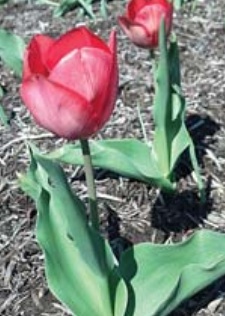Want to enjoy your potted spring blooms another year? Here's how

By Barb Delisio
OSU Master Gardener
Nothing excites us about spring as much as potted, blooming flowers. Lilies, daffodils, tulips and hyacinths brighten up a room and our spirits like nothing else this time of year. All these flowers can be planted outdoors to bloom again if the proper indoor care and outdoor planting instructions are followed.
Easter and other lilies, including day, Asiatic, Tiger and Stargazer, are extremely toxic to cats and can cause kidney failure. Don’t bring them into a home with cats. The other spring blooming flowers are perfectly safe around animals.
Keeping your flowers healthy will ensure they are strong enough for replanting outside and blooming next year. If choosing your own blooming flowers, choose ones in various stages of flowering, a few blooms and many buds. This will ensure longer blooming time in the house.
Tulips and daffodils are the easiest to care for and replant outside. Lilies and hyacinths are a little more demanding. When you receive your tulips or daffodils place them near a bright, natural light, avoiding glaring direct sunlight.
None of these plants will succeed if kept as houseplants. They need a dormancy period when the plant neither sends up foliage nor flowers. Since these potted plants are forced to bloom early, taking all nutrients out of the bulbs, they need to rest and replenish what the plant needs to grow and flower. Only by planting them outside when the flowers and leaves die back, and letting the bulbs or tubers grow and develop whatever is needed in the bulb, can they re-bloom the following year.
When you get your potted blooms, remove the foil paper to allow the plant proper drainage. Water to keep the soil moist.
Be sure to use a plate or tray underneath to collect the draining water. Water from the top and never let the pot sit in the drained water because it may cause the bulb to rot. Avoid placing the plant in drafts or exposure to heat, such as above or in front of a heating duct.
Once all the blooms fade, decrease the amount of water, barely getting the soil moist, about once every week. Also cut the flower stalk, but leave the foliage until it begins to turn brown, then cut it off to within 1 inch of the top of the bulb. Keep the plant in the pot and place it in a cool place with moderate light.
After the danger of frost has past, around the middle of May, you can plant it outside. Dig a hole about 8 to 10 inches deep. Work the soil to loosen and add compost for extra nutrients. Carefully remove the bulb from the pot and shake to loosen the soil around it. Bury the bulb completely with the root side down and the leaf side straight up. Cover the bulb with soil and tamp down to keep it from heaving up with the first hard frost in the fall. Stick a label on the spot where the bulb is planted so the area isn’t dug up when planting annuals or other perennials.
In the fall, top dress the bulb site with blood meal, working it into the soil, but do not disturb the roots. The following spring, as the weather warms, begin applying a balanced fertilizer monthly as soon as new growth appears.
 43
43
